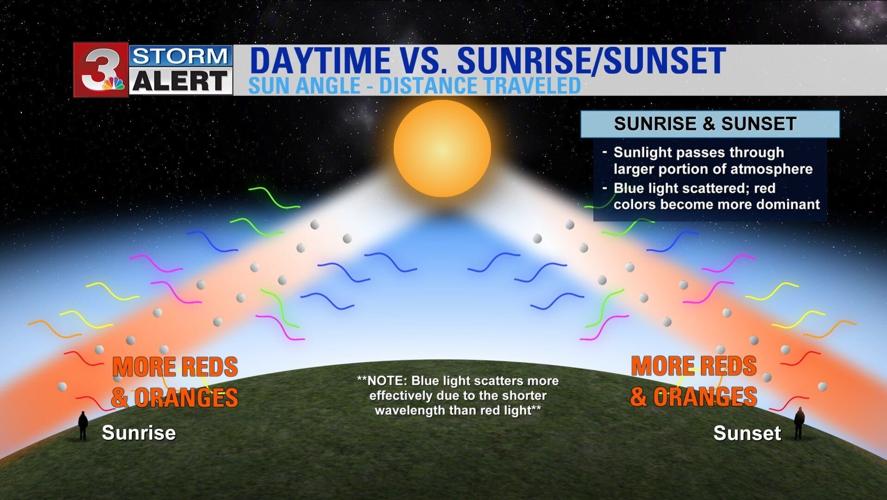We’ve experienced some stunning sunrises and sunsets this fall in the Tennessee Valley, which leads us to the question – what creates a colorful, vibrant sunrise or sunset?
The first variable controls the general colors of our sunrises and sunsets. Visible light from the sun is scattered as it travels through the Earth’s atmosphere by air molecules. The shorter wavelengths of blue and violet light are scattered more effectively than longer wavelength reds. Thus, our daytime sky looks blue to the human eye.
When the sun is lower in the sky closer to dawn and dusk, sunlight must travel through a greater distance of the atmosphere. Therefore, the blue light is already scattered by the time sunlight reaches your eye, and we’re essentially left with oranges and reds. This lower sun angle and longer distance create the darker red/orange glow of the rising or setting sun and the accompanying colors of the sky.

Now, the vibrancy and intensity of these twilight colors depend on the second variable – particles in the atmosphere. Dust, smoke, and other forms of pollution all work to mute or subdue the colors of sunrises and sunsets.
For instance, a sky with dust in the air may look redder at sunset, but it’s an overall darkening. It won’t have the same brilliant orange or red as clean air would. The dust particles reduce the light that reaches the ground. Higher humidity can have a similar effect, especially giving a milky look. This combination is particularly noticeable in the summer months when haze may fill the air.
The third variable is very important when considering the multitude of sunrise and sunset colors – clouds. To have a colorful and widespread sunrise or sunset, you do want some clouds present. Specifically, mid-level and high clouds are ideal. They catch the last glimpses of sunlight and reflect them to the ground. Therefore, the oranges and reds are already present with the low sun angle, and then the clouds work to intensify and expand those colors across the sky.

High-level, thin cirrus clouds often create that orange, golden glow, and altocumulus clouds may put on a show of peaches, pinks, corals, and more.
Low-level clouds tend to create problems by blocking too much light as they’re thicker or by only catching light from lower in the atmosphere which is impacted by pollution.
So, that leads us back to our original point – why have our sunrises and sunsets been so good recently? Well, during the fall season, the Tennessee Valley has a great combination of cleaner air, lower humidity, and a lower sun angle in general, producing colorful, brilliant, and longer-lasting sunrises and sunsets. This trend continues into the winter as well. The specific cloud types then come and go based on weather patterns, and we’ve enjoyed some nice clouds of late.















